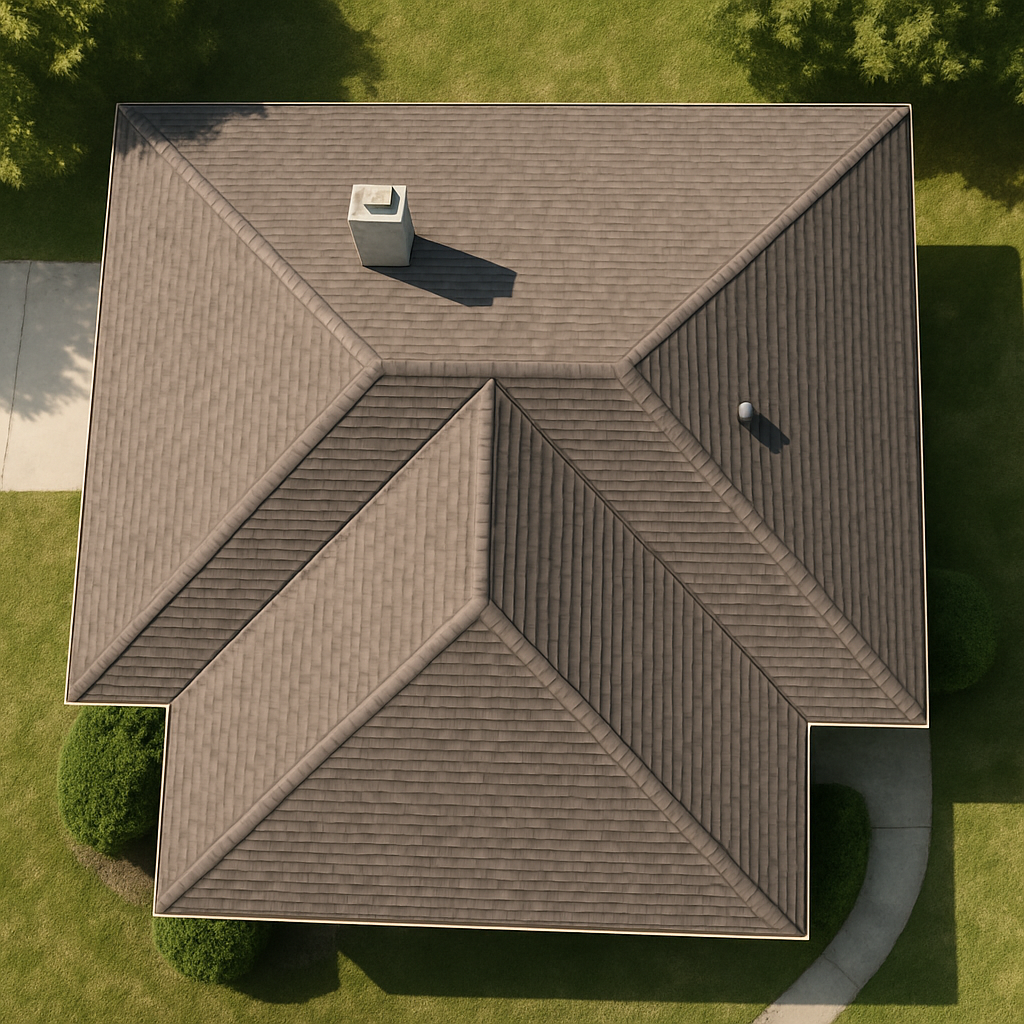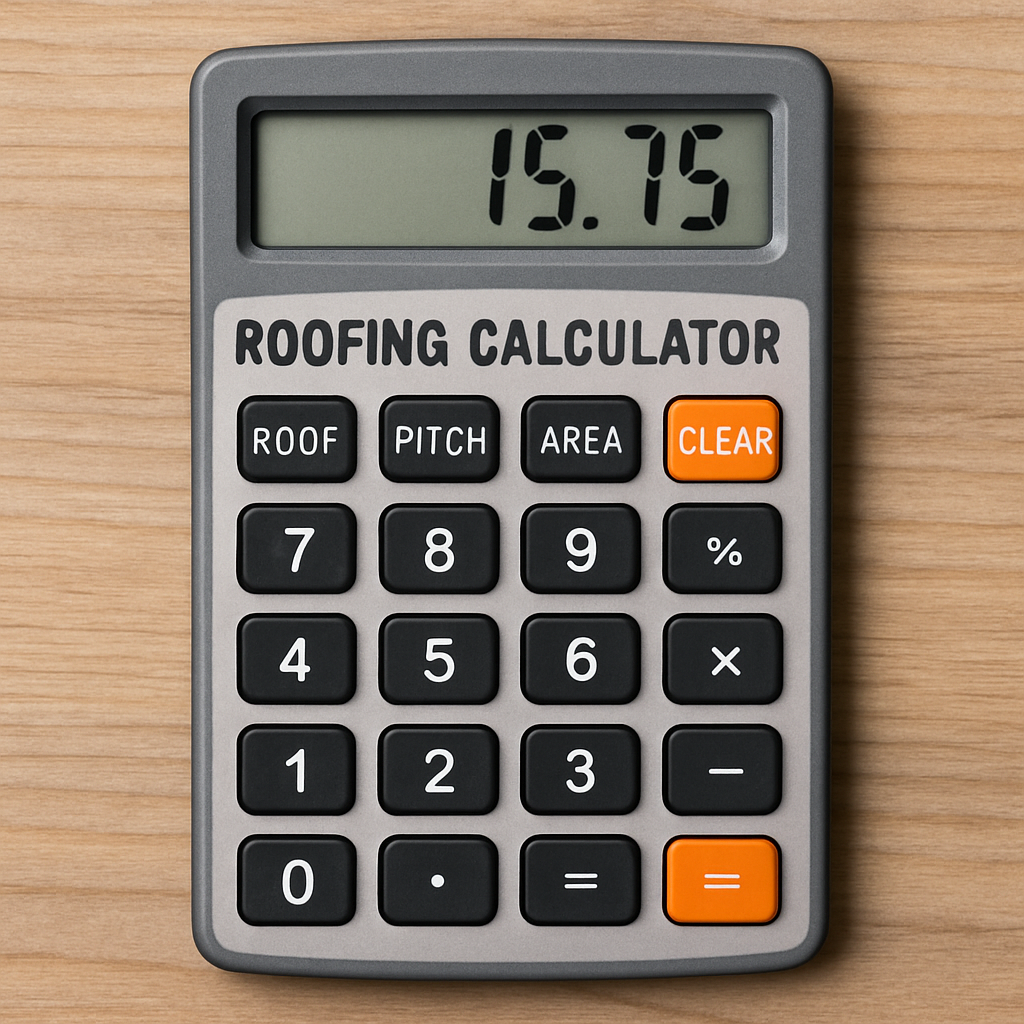Before diving into common errors, it’s important to understand how roof measurements work. The roof area is typically measured in square feet, and this measurement is used to estimate the amount of roofing material required. Accurate measurements are the foundation of any successful roofing project. They not only help in material estimation but also in labor cost forecasting and project planning. Knowing how to accurately calculate roof square footage by address and using tools like a roofing calculator can simplify this process. These tools reduce the likelihood of human error and provide a more reliable basis for making purchasing decisions.
The Basics of Roof Square Footage
To calculate the square footage of a roof, you need to measure the length and width of each plane of the roof and multiply them together. This process involves not just linear measurements but also a clear understanding of the roof’s layout. If the roof has multiple planes, you’ll need to calculate the area of each one separately and then add them together to get the total roof area. In complex roofs with numerous angles and facets, breaking down the roof into simpler geometric shapes can aid in more accurate calculations.
For example, if one section of the roof measures 20 feet by 30 feet, the area of that section is 600 square feet. Repeat this for each section of the roof and sum the totals to find the overall roof area. By doing so, you can ensure that no section of the roof is overlooked, which is crucial for precise material estimation. Additionally, employing grid paper or digital drawing tools can assist in visualizing and organizing these measurements effectively.
The Role of Roof Pitch
One key element that can affect your calculations is the pitch of the roof. The pitch is the steepness of the roof and is expressed as a ratio of the vertical rise to the horizontal run. A steeper roof means more surface area, which will affect the amount of material needed. Understanding the pitch is crucial not just for material calculations, but also for safety considerations during the installation process.
To account for the pitch, you can use a roof pitch multiplier in your calculations. This multiplier adjusts the measured square footage to reflect the true area of the roof. Most roofing calculators have this feature built in, allowing you to enter the pitch and get an accurate estimate. Failing to incorporate the pitch can lead to significant underestimations, especially in roofs with complex geometries or varying pitches. Understanding the nuances of roof pitch can also inform decisions about appropriate materials and installation techniques.
Common Mistakes in Calculating Roof Area
Even with a basic understanding of how to measure a roof, several common errors can lead to inaccurate estimates. These mistakes often arise from assumptions about the roof’s geometry or from overlooking critical factors such as roof features and pitch. Understanding these common pitfalls can help you avoid them in your own calculations.
Overlooking Roof Pitch
One of the most frequent mistakes is failing to account for the roof pitch. Many people simply measure the length and width of the roof and calculate the area as if it were flat. This can significantly underestimate the amount of material needed, especially for roofs with a steep pitch. The pitch not only affects the surface area but also influences the type of materials that should be used.
Ignoring the pitch can lead to a cascade of issues, from insufficient materials to safety hazards during installation. This oversight is often due to a misunderstanding of how pitch affects overall roof area. By incorporating the pitch into your calculations, you ensure that you have a realistic estimate that aligns with the roof’s true dimensions.
Incorrect Measurements
Another common error is taking incorrect measurements. This can happen if you use the wrong tools, measure inaccurately, or fail to account for all sections of the roof. Even small errors in measurement can lead to significant discrepancies in the calculated area. Incorrect measurements not only affect material estimates but can also lead to project delays and increased costs.
To avoid this, always double-check your measurements and use reliable tools. Consider practicing your measurement techniques on simpler structures before tackling complex roofs. Digital measurement tools can also provide a higher degree of accuracy and reliability compared to traditional tape measures.
Ignoring Roof Features
Roofs often have features such as dormers, skylights, or chimneys that can complicate area calculations. Failing to include these features in your measurements can result in an underestimation of the required materials. Each of these features requires additional materials and labor, which should be considered in your project estimates.
Ignoring these features can lead to shortages in materials and unexpected cost increases. To accurately calculate the roof area, ensure that you measure and include these features in your estimates. By taking into account these additional elements, you can create a comprehensive plan that accommodates all aspects of the roof design.
Not Using a Roofing Calculator
Many people attempt to calculate roof area manually, which increases the chance of error. Manual calculations can be prone to mistakes, especially in complex roof designs. Using a roofing calculator square feet tool or a roof shingle calculator can simplify the process and improve accuracy. These tools often include features for accounting for roof pitch and other variables.
Relying on these tools can save time and reduce the risk of human error in your calculations. Roofing calculators are designed to handle the complexities of different roof types, providing more reliable estimates. By integrating technology into your calculations, you can achieve more precise results and avoid costly mistakes.
Using Tools to Avoid Mistakes
by Jared Murray (https://unsplash.com/@jaredmurray)
To avoid these common mistakes, consider using a variety of tools designed to help with roof area calculations. These tools can streamline the calculation process, providing more accurate estimates and reducing the risk of errors. By leveraging technology, you can ensure that your roofing project is executed efficiently and within budget.
Shingle Estimator
A shingle estimator can help you determine how many shingles you need for your roof. By entering the roof’s dimensions and pitch, the estimator provides an accurate count of the required shingles, helping you avoid over- or under-purchasing materials. This tool is particularly useful for large projects where material costs can quickly escalate.
Using a shingle estimator can also help in budgeting and planning, ensuring that you have the right amount of materials before starting the project. By accurately estimating your shingle needs, you can avoid waste and reduce the environmental impact of your project.
Roofing Material Calculator
A roofing material calculator is another useful tool that can provide estimates for all types of roofing materials, not just shingles. By inputting the roof area and material type, you can get a detailed breakdown of what you need. This tool can be invaluable for projects involving diverse materials like tiles, metal sheets, or composite products.
These calculators offer a comprehensive view of your material needs, allowing you to make informed decisions about purchasing and budgeting. By having a clear understanding of your material requirements, you can streamline procurement and minimize delays caused by material shortages.
Roof Square Footage Calculator by Address
Some services offer a roof square footage calculator by address. These tools use satellite imagery to calculate the roof area, providing a quick and easy way to get accurate measurements without climbing onto the roof. This technology can be particularly beneficial for properties that are difficult to access or have complex roof designs.
Using satellite imagery, these calculators can provide highly accurate measurements and reduce the need for physical inspections. This not only saves time but also enhances safety by minimizing the need for on-site measurements. By leveraging these advanced tools, you can ensure that your calculations are precise and reliable.
Free Roof Estimates
If you’re unsure about your calculations, consider getting a free roof estimate from a professional. Many roofing companies offer this service, providing peace of mind and ensuring that your project stays on track. Professional estimates can also provide valuable insights into potential challenges and solutions for your roofing project.
By consulting with professionals, you can validate your calculations and gain confidence in your project plan. This collaboration can also lead to more efficient project execution and help you avoid costly errors. Whether you’re a DIY enthusiast or a seasoned contractor, professional input can enhance the success of your roofing project.
Tips for Accurate Roof Area Calculations
To ensure that your roof area calculations are as accurate as possible, follow these tips. By adhering to these guidelines, you can minimize errors and maximize the efficiency of your project. Accurate calculations are the foundation of a successful roofing project, impacting everything from material costs to labor requirements.
- Double-check measurements: Always verify your measurements to avoid errors. Take the time to cross-reference your figures and ensure they are consistent.
- Use the right tools: Invest in a good quality measuring tape and consider using a digital level to assess roof pitch. Reliable tools can greatly enhance the accuracy of your calculations.
- Consider professional help: If you’re unsure about the process, seek assistance from a roofing professional. Expert input can provide valuable insights and prevent costly mistakes.
- Utilize technology: Take advantage of roofing calculators and other digital tools to streamline calculations and reduce mistakes. Embracing technology can lead to more accurate and efficient project execution.
Conclusion
Accurate roof area calculations are essential for any roofing project. By understanding the measurement process and avoiding common mistakes, you can ensure that you have the correct amount of materials and avoid unnecessary expenses. Precision in measurement and calculation is key to a successful roofing project, impacting everything from budgeting to project timelines. Whether you’re using traditional methods or leveraging advanced tools, precision in measuring and calculating will lead to a successful roofing project.
By adhering to these guidelines, you can confidently estimate the materials needed for your roof, ensuring that your project proceeds smoothly and efficiently. With careful planning and execution, you can achieve a roofing project that is both cost-effective and timely, delivering lasting results and satisfaction.



